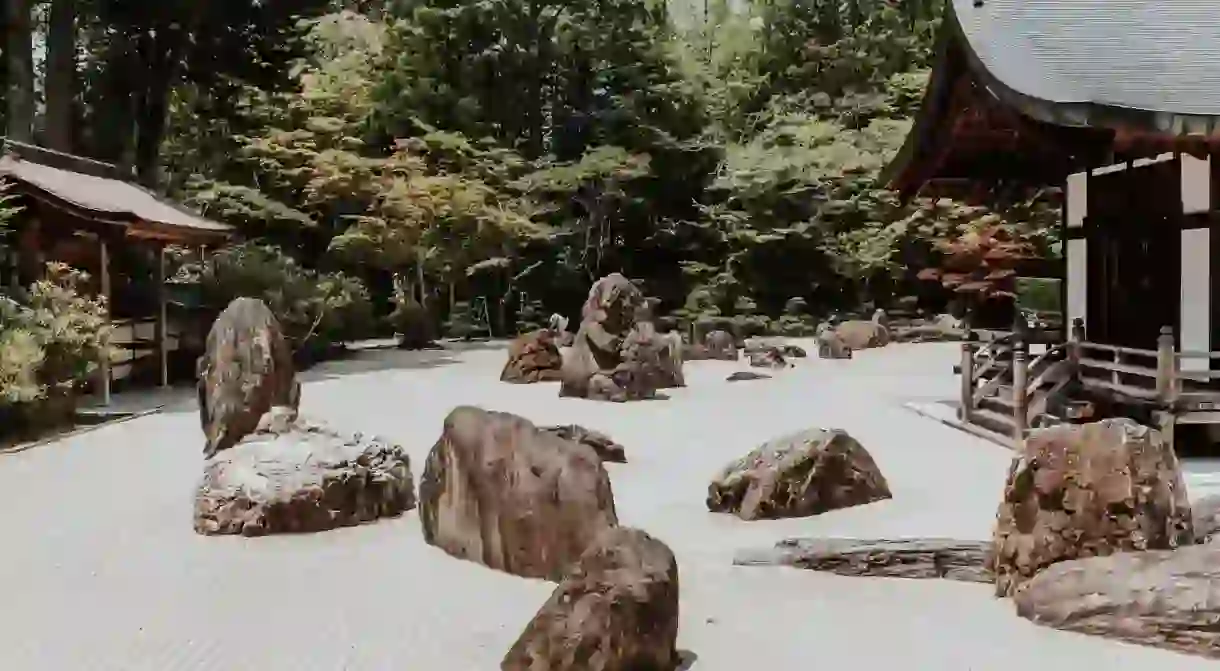Banryutei: The Rock Garden Protecting Shingon's Head Temple

Among the many mystical sights in the sacred temple town of Koyasan, Kongobuji Temple and the Zen rock garden are among the most spiritual.
Koyasan is a temple town surrounded by high mountain peaks and deep forests. Located just south of Osaka in Wakayama Prefecture, a place with many fabled spiritual sites, it has been a destination of pilgrimage for over a thousand years.
Amid the many shrines, temples and tombs scattered across the town, Kongobuji Temple stands out as one of the most imposing structures. While it is one of the newest architectural additions – its latest iteration was constructed in 1869 – it has become the head temple of Shingon Buddhism, an esoteric sect that was founded in this very village.

The temple was initially created by Kobo Daishi, the founding father of Shingon Buddhism, in 816. Back then, it was different in name and appearance. The temple then changed its look multiples times, most notably in 1593 on behalf of Toyotomi Hideyoshi, a famous feudal lord. He had it reconstructed as a memorial to his deceased mother. It was rebuilt again in 1861 before burning down only two years later. Finally, Kongobuji received its present name and status in 1869.
Now, it’s dedicated to Akshobhya, one of the Five Wisdom Buddhas. These five deities represent the five qualities of the first Buddha; Akshobhya is an immovable, non-violent being who reveals the true states of reality and consciousness.




Head through the impressive main gate – the only structure remaining from 1593 – to behold the immense main complex. Akshobhya’s season is winter; the grounds, which are grand year round, are extra appealing during this time. The snow-covered stones add a beautiful stillness to the contemplative atmosphere. Take it in before heading inside.

The main buildings have two entrances. Daigenkan is the main gate where only the Japanese Emperor, the imperial family and high officials of Koyasan may enter. Kogenkan, or small entrance, is reserved for a superclass of priests in Koyasan. Today, it is an entrance immediately to the right of this that serves as the main entrance for visitors.

To enter the main section, guests must pay an admission fee and then remove their shoes. Guests first enter the Ohiroma (Main Hall), a space used for important religious ceremonies and rituals. Inside are fusuma (sliding doors) adorned with 16th-century paintings of cranes and pines done by Kano Tanyu, one of the foremost painters of the famed Kano school.
A long corridor leads to the Betsuden (Temple Annex), a later addition built in 1934. Here, visitors can enjoy snacks and tea while gazing at renderings of Kobo Daishi and his deeds, both legendary and factual.

Finally, head to the Banryutei rock garden, the largest in all of Japan. Over 100 large granite stones dot the 2,340 square metre garden, which depicts two dragons rising from a sea of clouds. The dragons are charged with protecting the temple. The stones were imported from the island of Shikoku, Kobo Daishi’s birthplace. The smaller white rocks are from Kyoto. This garden was only built in 1984, but its size and beauty have garnered immense fame around Japan.





















